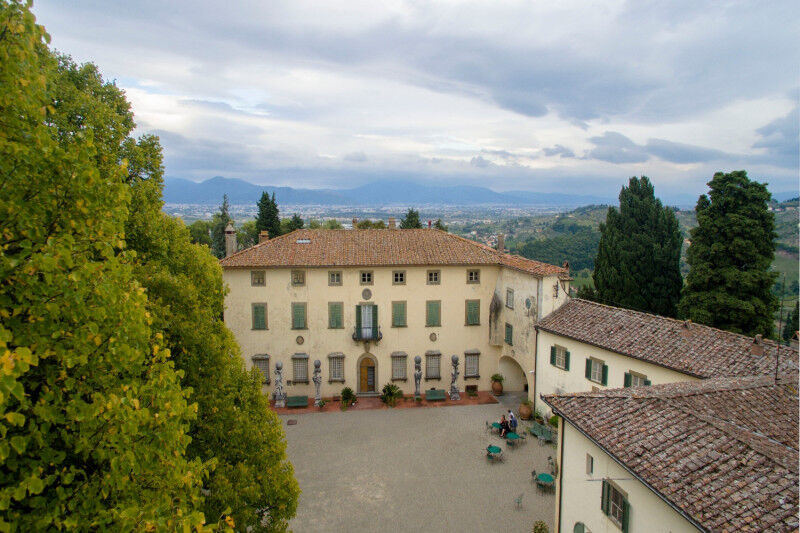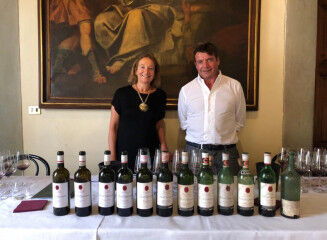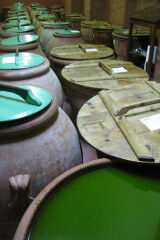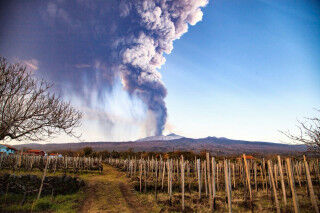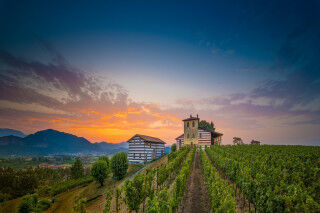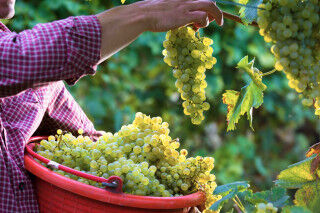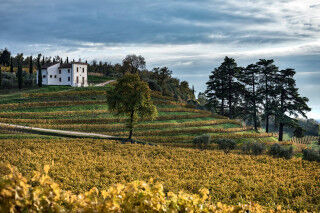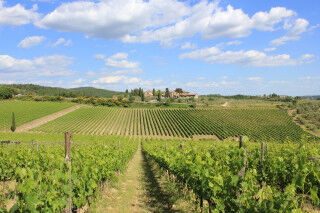CAPEZZANA AND AGRICULTURE: AN ANCESTRAL BOND
The world of Tuscan wine is particularly rich in characters and wineries that have left their lasting impression on this land, thanks to past, present, and future enological undertakings. Each of these imprints, has in some way allowed Tuscan wine to consolidate its worldwide reputation, thanks to the intuitions of the wine-makers found here.
The Contini Bonacossi family certainly is part of this history, and we could say that Capezzana, the tenuta in Carmignano producing their remarkable wines, has been active in organic farming all way back to at least 1200 years ago. The Capezzana estate has been using natural elements since its very inception, to maximize this region’s remarkable vineyard and olive oil-producing capabilities from time immemorial.
The Carmignano estate is the perfect representation of the Tuscan notion of in medio stat virtus, or meaning that the real truth lies between two realities. The merits of Tuscany’s central hills which maintain and offer a stable continental climate, with the assistance of the presence of delightful Mediterranean currents running throughout the hills, without any negative impact on the atmospheric conditions, temperature or brightness.
CARMIGNANO: A LONG AND IMPORTANT HISTORY
We can begin tracing wine within the roots of Carmignano, this small town near Prato, all the way back to about 3 millennia ago. During the pre-Roman era, ancient wine jars were discovered as relics within ancient Etruscan tombs, and records left by Caesar dating back to 50-60 A.D., indicate the award of this land to a select group of his veteran soldiers of lands between the Arno and the Ombrone Rivers. These lands were already cultivated with grape vines and olive tree orchards, according to documentation of the day.
The first recorded testament we have of vineyard and olive oil cultivation and farming date back to 804, in a Latin written lease contract written by functionaries of the Church of San Pietro a Seano. Covering an area directly within the hills of Capezzana, the church granted a perpetual lease upon one of its holdings (Capezzana), specifically inclusive of “cum….vineis, silvis, olivetis,” (with ….vineyards, woods, olive groves).
The 17th century saw the wines produced locally setting sail towards Northern Europe, as per written testimony of the day. The true elevation and exaltation of the Capezzana wines occurs however, in the 18th century, as Carmignano gains its very first “license of nobility.” This specific title grant harkens back to the Medicean proclamation of 1716, where the Capezzana wine’s region is specifically delineated for the very first time, just like the Chianti, Pomino and Valdarno di Sopra wine regions. This happened a full century and a half before the French AOC (Appellation d'origine controlée) law came into vigor in France on a much larger scale.
These two centuries were undoubtedly fundamental for the success of the Carmignano wine region. Thanks to events taking place during this time, a clear and marked move towards experimentation and wine trading, with the Medici family as main players, was possible. This also helped the local producers move towards wines with fuller bodies, more authenticity, and greater elegance in taste and appearance.
So, with such a storied past, why has the wine region only begun showing signs of life within the last few decades? Because, for a long time, the Carmignano wine region and its wine producers went against the very grain of their identities.
In order to make the wine region more relevant and illusorially advantageous, the Carmignano wine region was included as part of the general production area of Chianti. Following this, Carmignano was passed over to the Montalbano region. This certainly didn’t help matters, as for the next 40 years, the Carmignano wines, which at one point represented a pinnacle of Medicean wine making, was lost in the fray of a highly dubitable denomination with little prestige.
It was only towards the end of the 1960s, with the Ugo Contini Bonacossi family at the helm, that the wine-makers within the Carmignano area were finally granted their request and were re-granted the Carmignano DOC (officially recognized in 1975), and followed it up with DOCG status in 1998. Today, thanks to this reorganization of resources, wine makers within Carmignano can include local vintages dating back to 1969.
The Carmignano lands also represent an unusual grape blending, joining varietals like Cabernet Franc and Sauvignon, which actually have been cultivated locally for many centuries. We can see here an ante litteram Supertuscan wine, or one of the first Tuscan wines to openly declare the blending of Cabernet (in the 18th century , this vine was described as a Franc grape) with the Sangiovese grape.
VILLA DI CAPEZZANA: AN ARCHITECTURAL GEM AND A WINE OF SUMPTUOUS EXPRESSION
A wonderful feature of the Capezzana Estate is that you can do more than one thing at a time: you can enjoy fine wine tastings while at the same time, you can breathe in the charm of the estate’s ancient history and fabulous art.
The estate is divided into separate, unique parcels: 100 hectares of vineyards, 140 hectares of olive tree groves, 350 hectares of dense woods. Within these divisions, we find an ancient 16th century wine cellar, a contemporary olive oil production mill, and the fascinating vinsantaia. These are all incredible elements to explore within the authentic gem of the estates’s primary Villa.
The villa’s interiors, beginning with the "Salottino Impero" and proceeding into the "stanza di Elena,” all the way to the "sala grande" on the main floor, are a remarkable collection of precious paintings, antique furnishings and decorative art pieces that would make any antiquities dealer ecstatic. The Capezzana’s outdoor jewels are equally stunning: the eye naturally sweeps across the green, velveteen countryside dotted with hills, vineyards, woods, and countless country roads.
Therefore, with an exploration of Villa di Capezzana, we gain more insight into Tuscan villa style, a lesson on Renaissance architecture, and an enological look at bio-dynamic wine production from one of Carmignano’s leaders in this wine-making approach.
Participation in a Villa di Capezzana vertical tasting (1930-2017), held just a few short months ago, was an experience leaving both a sensorial understanding of the wines, but also an undeniable recognition of the vintages frailty. What remained more impressed though, was the incredible consistency the wines played upon our sensorial faculties.
To further up the ante of this experience, when the Estate’s wine makers added the perfect vintage into the mix (1969), the vintage described as that year kissed by God, the sensorial and physical delights of this tasting were evidenced, and the wines were recognized for their abilities of giving imbibers enormous satisfaction and leading their minds through a journey of unexpected pleasure.
During the tasting, the most recent vintages, the years 2010, 2016, 2017, of the Villa di Capezzana expressed the denomination’s main characteristics: excellent structure, high polyphenolic content, excellent body and pleasantness, intense floral notes of violet, and fruity aromas of currants and blackberries, sometimes followed by notes of spice and cocoa.
A favorite part of the vertical tasting was with the Villa di Capezzana’s old and ultra-old vintages dating from 1930, 1969, 1974, 1977, 1981, 1995. These labels share stories from other wines, wines steeped with sensational flavors, with a murmuring of medicinal herbs on the nose, and disarming tannic silkiness on the palate. In other words: incredibly alive!
For more insight into Tuscany’s wine regions, be sure to follow Mamablip’s own Filippo Bartolotta as he explores the magic of the Montalcino wine region in southern Tuscany. Follow it up with a series of Italian wine tastings to learn more about the wine Montalcino wines produced in Montalcino. Curious how to pair this Capezzana and other wines? Don’t miss Mamablip’s Wine Selections page, for lots of food and wine pairings, and how to purchase your favorite fine Italian wines.
Don't forget to register for Mamablip's weekly newsletter for updates on all the exciting newest Mamablip Blog articles, recipes and other wine news from Italy.
